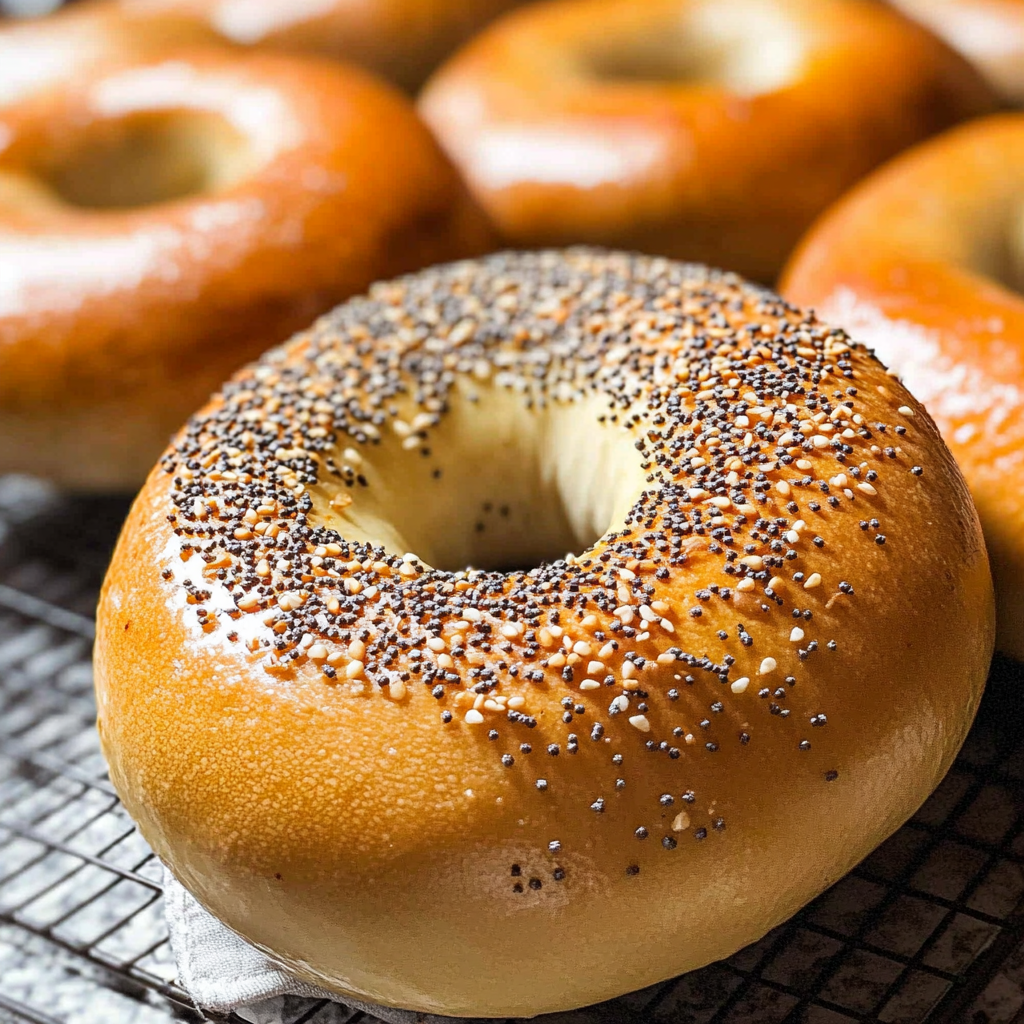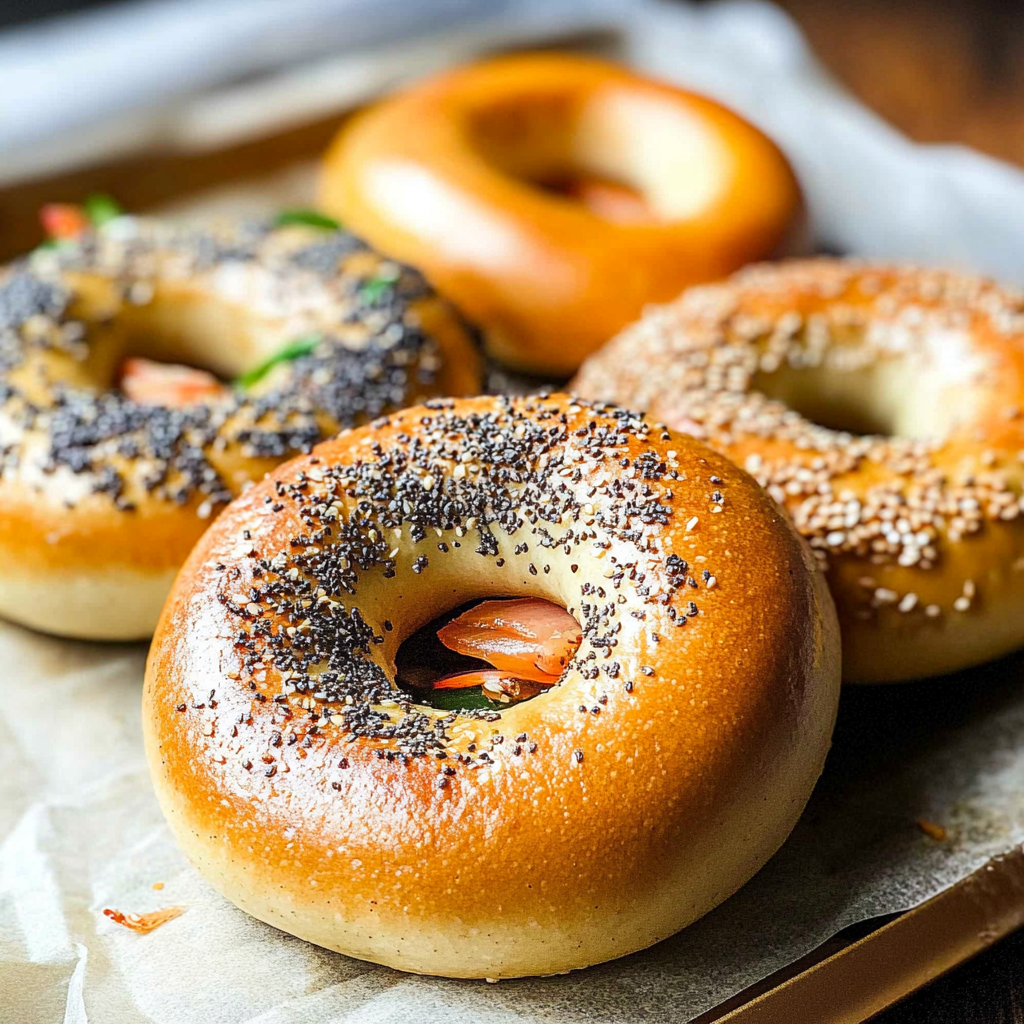There’s nothing quite like biting into a warm, chewy bagel with a glossy, golden crust. Whether you crave a classic New York–style bagel or a flavored twist, learning to make them from scratch is a rewarding experience. In this ultimate guide, you’ll discover how to make the best bagel recipe right in your own kitchen, using simple tools and ingredients.
If you’ve ever wondered why homemade bagels taste so much more authentic than store-bought, this detailed recipe and technique breakdown will show you exactly how to get that perfectly chewy, bakery-style result.
A Brief History of Bagels
Bagels originated in 17th-century Poland, where Jewish bakers created these boiled-and-baked breads with their signature ring shape. When immigrants brought bagels to New York in the late 1800s, they quickly became a city staple. The dense crumb, distinctive chew, and slightly sweet malt flavor became the hallmarks of a truly authentic bagel.
To better appreciate how bagels evolved, check out this Smithsonian article on bagel cultural history. It’s fascinating to see how a humble bread became an American breakfast icon.
What Makes an Authentic Bagel?
Unlike bread rolls, true bagels have unique qualities:
- Boiled before baking to create a dense, chewy crust
- Glossy exterior with a golden finish
- Slight sweetness from barley malt syrup
- Rope-shaped dough formed into a ring
- A satisfying, springy crumb
Commercial bagels are often steamed instead of boiled, which results in a soft, bready texture — nothing like the real thing. If you want that bakery-style chew, you must boil them before baking. You can also read about the science of chewy bagels from this Serious Eats article to understand why the method works so well.
Key Ingredients & Why They Matter
To master the best bagel recipe, you need to use the right ingredients:
- Bread flour – higher protein gives structure and chew
- Barley malt syrup – classic sweet, malty flavor (check out King Arthur’s guide on barley malt syrup and why it matters)
- Active dry yeast – helps with consistent rise
- Salt – balances sweetness and strengthens gluten
- Water – a bit cooler than room temperature prevents over-fermentation
- Toppings – sesame, poppy, everything blend, or your own creative mix
Using bread flour instead of all-purpose is one of the biggest secrets for authentic bagel chewiness. Combined with barley malt syrup, you’ll get a flavor profile you just can’t replicate with standard ingredients.
Tools You’ll Need for Bagel-Making
Here’s what you’ll want in your kitchen:
- Stand mixer with a dough hook (optional but very helpful)
- Slotted spoon for the boiling step
- Baking sheet with parchment paper
- Kitchen scale (for consistent dough portions)
- Wire rack for cooling
If you don’t have a mixer, you can knead by hand — just plan for a good upper-body workout!
Step-by-Step Best Bagel Recipe
Below is a straightforward, foolproof method for homemade bagels:
- Prepare the dough
- Mix bread flour, yeast, salt, barley malt syrup, and water
- Stir until shaggy dough forms
- Knead thoroughly
- About 8–10 minutes by hand or 5–6 minutes in a mixer
- Dough should be smooth and elastic
- First rise
- Cover the bowl and let rise about 1 hour until doubled in size
- Divide and shape
- Divide into 8 equal pieces
- Roll each into a rope, then shape into a ring, sealing the ends with water
- Second rise
- Place shaped bagels on parchment
- Let rest 30 minutes
- Boil the bagels
- Bring water to a gentle boil with a tablespoon of baking soda or barley malt
- Boil bagels 30–60 seconds per side
- Drain on a rack
- Add toppings
- Dip the boiled bagels in seeds or seasonings if desired
- Bake
- Bake at 425°F (220°C) for 18–22 minutes
- Rotate the tray halfway through
- Cool completely
- Place bagels on a wire rack for best texture
The boiling step is crucial to develop that chewy crust and shiny exterior. Skipping it will leave you with a bread roll — not a true bagel!

Pro Tips for Perfect Bagels
✅ Use ice water to control dough temperature, especially in warm kitchens
✅ Try an overnight cold ferment for even more flavor
✅ Don’t skip the boiling — it locks in the crust
✅ Brush with egg wash for a shinier finish
✅ Weigh your dough balls for perfectly uniform bagels
Variations: Flavored & Specialty Bagels
Once you master the classic bagel, you can experiment:
- Cinnamon raisin
- Blueberry
- Jalapeño cheddar
- Asiago cheese
- Whole wheat or multigrain
- Everything bagels
Add inclusions like dried fruit or spices directly into the dough before shaping. Toppings go on after boiling but before baking.
Common Bagel Mistakes to Avoid
- Over-proofing: bagels collapse
- Under-kneading: dough is too weak
- Skipping the boil: no chewy crust
- Wrong flour: too low in protein
- Baking at too low temperature: bagels stay pale
Storage and Freezing Tips
- Cool bagels completely before storing
- Keep in an airtight bag for 2–3 days
- Freeze in a zip-top bag up to 3 months
- Toast directly from frozen for best results
Serving Suggestions & Pairings
Your homemade bagels deserve the best fillings:
- Classic cream cheese and smoked salmon
- Nut butter and jam
- Breakfast egg sandwiches
- Turkey and cheddar for lunch
- Pair with a bold coffee or iced latte
FAQs
Q1: What is the secret to making bagels?
The boiling step is the biggest secret. It creates a chewy crust and sets the bagel shape before baking.
Q2: Why do you boil bagels before baking?
Boiling gelatinizes the starch on the outside, locking in moisture and helping toppings stick.
Q3: Are bagels healthier than bread?
Bagels are more dense, with higher calories, but they are not necessarily less healthy if eaten in moderation.
Q4: Can I make bagels without barley malt syrup?
Yes, honey or brown sugar are decent substitutes, though the authentic flavor may be slightly different.
Q5: Why are New York bagels different?
The water mineral balance and boiling method make NY bagels extra chewy and flavorful.
Conclusion
Making bagels at home is a fun, rewarding challenge. By using bread flour, barley malt syrup, and boiling before baking, you can recreate that authentic bakery experience. Don’t be intimidated — with the right steps, even a beginner can master this best bagel recipe.
Give it a try and see why homemade is worth every bite!
